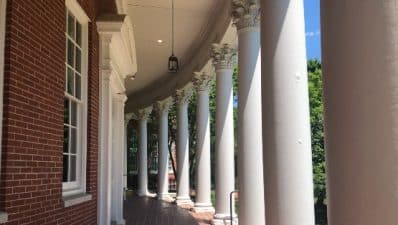The Top Story by Chris Graham
Critics of Augusta County’s apparent interest in bringing Toyota to a megasite in Weyers Cave have expressed concerns about the negative impact that they see an automobile manufacturer having on the quality of life in the county and surrounding areas.
At first glance, Linda Glass, a small-business owner in Georgetown, Ky., where Toyota opened a manufacturing facility in 1988, would seem to be right there with them.
Glass, the president of the Georgetown/Scott County Chamber of Commerce, said the Toyota plant there “has pretty much changed everything” about the town and neighboring Scott County.
“It’s changed our educational climate. It’s changed our government – because they have more money to spend on infrastructure improvements. And it’s changed our commercial climate by attracting more service-related businesses,” Glass said.
One thing that has not changed, significantly, is the small-town flavor that some Georgetown and Scott County residents were concerned would erode with the arrival of Toyota, Glass told The Augusta Free Press.
“There were people who said they didn’t want this to come here. The announcement was met very positively overall – but there were some people that were concerned. I’m very proud of the way it all came about – at the time this happened, we had a very good planning and zoning director, and I feel like we did a superb job of taking care of some of those concerns by good progressive planning and zoning regulations. That helped a lot,” Glass said.
Even with the attention to the detail to that end, the population of Georgetown and Scott County has grown rather substantially – percentage-wise, anyway – since the arrival of Toyota. The current population of Scott County is 39,000, according to a 2005 estimate from the U.S. Census Bureau, up from 24,000 in the 1990 census.
Georgetown has also seen a spike in its population – from 11,000 in 1990 to 18,000 in 2005.
Augusta County, for the sake of comparison, has been witness to steady growth even without a major manufacturer like Toyota putting down roots. The population in Augusta County and the two independent cities that bisect the county, Staunton and Waynesboro, is currently at 112,000, up from 93,000 in the 1990 census.
A portion of the growth in Georgetown and Scott County, Glass said, can be attributed to the impact of Toyota – “but the changes that people expected to come with the announcement that they were coming didn’t happen overnight.”
“They didn’t happen as quickly as some people thought they would, that’s for sure,” Glass said. “When they first announced, people started buying up land – and speculators came in. That was premature – because it took quite a while for the changes to come.”
Some residents in Princeton, Ind., where Toyota opened a manufacturing plant in 1998, are still waiting for the changes that they assumed would come to their community.
“Some people look up and say, Well, gosh, we haven’t gotten any bigger or any better since they came here. What was the big deal?” said Todd Mosby, the executive director of the Gibson Area Chamber of Commerce, which represents business interests in Princeton and Gibson County in Southwestern Indiana.
Gibson County’s population has almost remained flat since the opening of the Toyota plant – the 2005 Census Bureau estimate pegged the county’s population at 33,400, an increase of 1,500 residents from the 1990 census.
Princeton’s population has grown from 8,100 in 1990 to 11,500 in 2005.
“I think anybody here would tell you – we are a rural, agricultural-manufacturing area. And probably that won’t change – even though our Wal-Mart has become a Super Wal-Mart, even though we’re working on bringing in a Menards, which is much like a Lowe’s or Home Depot. Even though things like that are starting to happen here, we still are a rural community,” Mosby told the AFP.
Residents of Putnam County in West Virginia, where Toyota opened a plant in Buffalo in 1998, say the same things about life there.
“The growth that we’ve seen from this has been positive, very positive,” said Steve Spence, the executive director of the West Virginia Development Office, who lives in Putnam County.
“I live 12 miles from Buffalo – and there is a wide variety of homes being built. More right in the Buffalo area have been built. Things like that have been enhanced by the Toyota plant. I can’t say they caused all that – but there is growth. And it’s all positive,” Spence told the AFP.
Putnam County’s population, according to a 2005 estimate from the Census Bureau, was 54,000 – up from 43,000 in 1990 and 51,500 in 2000 just after the Toyota plant opened.
The population in Buffalo has grown as well – from 970 in 1990 to 1,170 in 2005.
“Nothing that has occurred has been negative in any way. Everything has been positive,” Spence said.
(Originally published 06-19-06)










